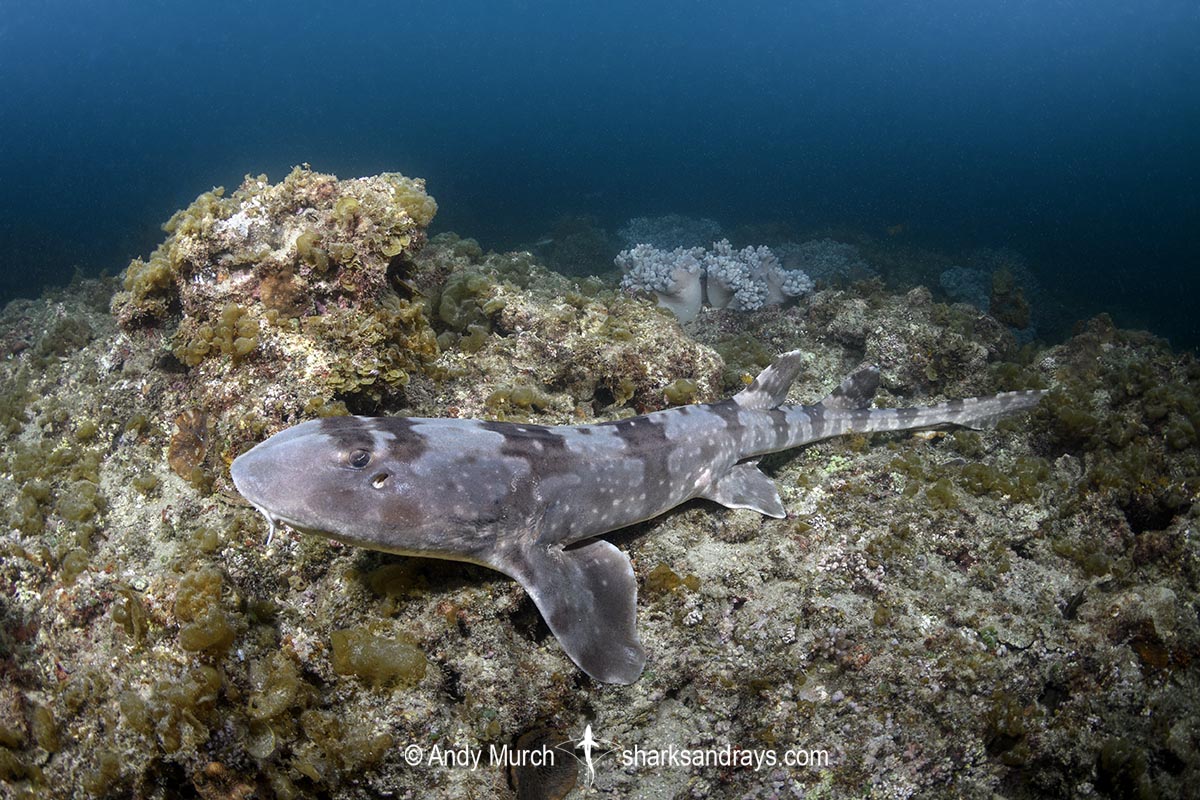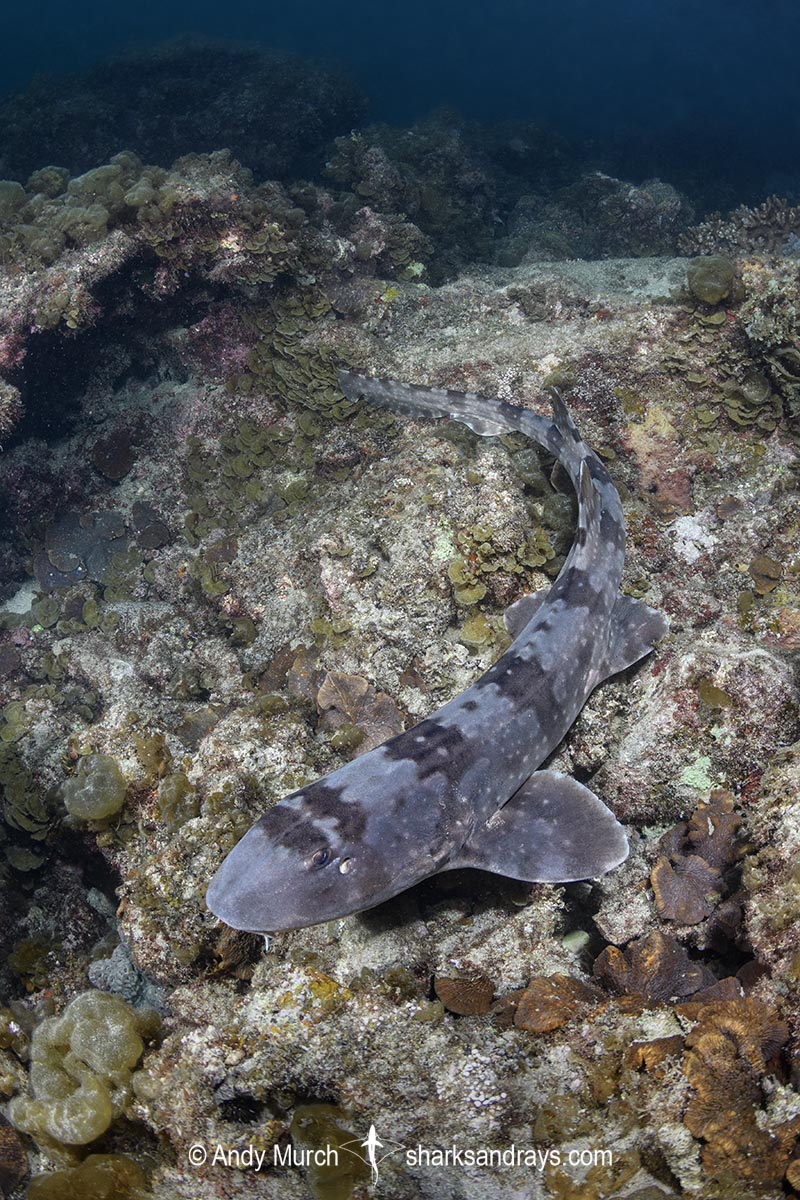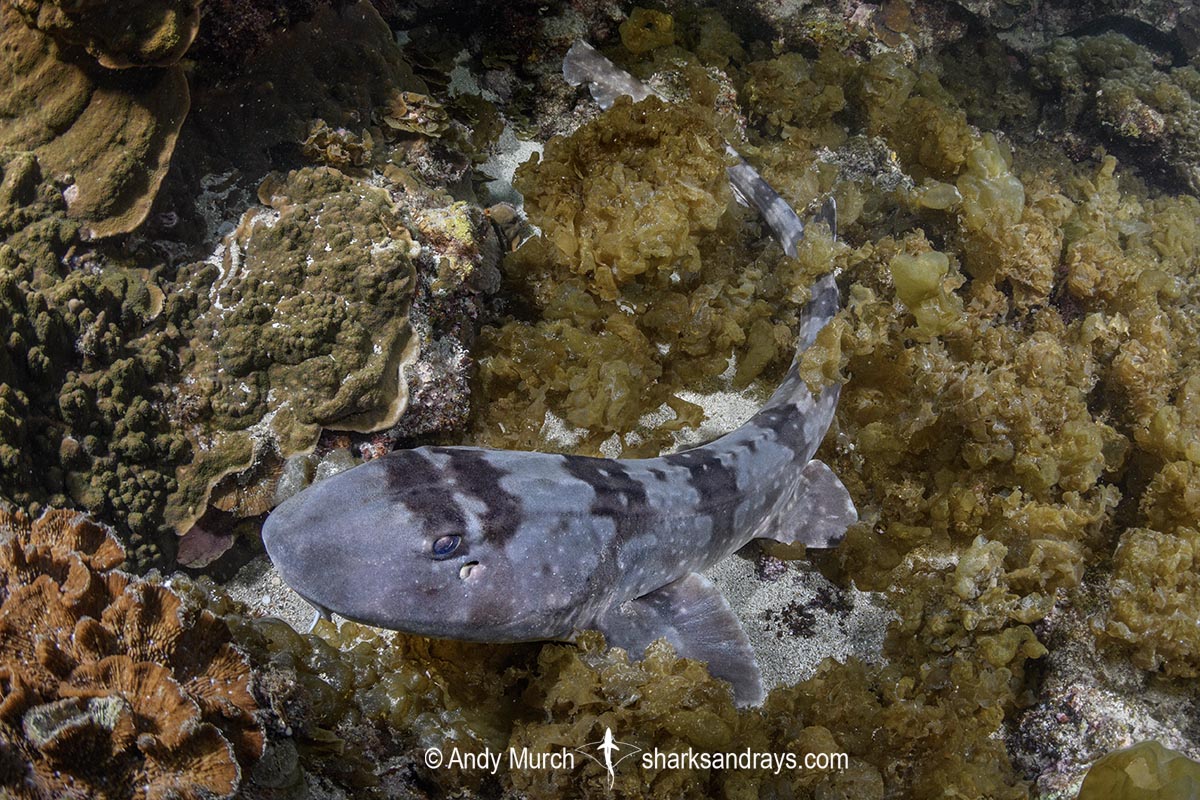Common name(s)
Whitespotted Bamboo Shark, White-spotted Carpetshark.
Binomial
Chiloscyllium plagiosum
Synonyms
Chiloscyllium indicum plagiosa, Chiloscyllium indicum plagiosum, Hemiscyllium plagiosum, Scyllium ornatum, Scyllium plagiosum.
Identification
Rounded snout. Snout length roughly equal to mouth width. Short barbells extend from nasal openings to mouth level. Spiracle equal in size with eye. Short gill slits. A lateral groove on each flank runs from behind head to base of tail. Dorsal fins have straight or mildly convex posterior margins and acutely rounded tips. First dorsal origin over pelvic fin insertion. Second dorsal almost as large as first. Anal fin low and rounded; positioned directly before lower caudal lobe. Caudal fin long and thin, with long, low, rounded lobes.
Dorsal coloration grey, tan or brown with 8 or 9 irregular dark saddles and small light spots. Ventrum slightly paler than flanks.
Size
Maximum size 95cm. Size at birth less than 9-12cm.

Conservation Status
NEAR THREATENED
The Whitespotted Bamboo Shark is caught and often retained in (mostly unmanaged) demersal trawl, longline, and gillnet fisheries throughout much of its range. Although fishing pressure is intense in most areas, it is still the most abundantly caught shark in parts of Taiwan, Malaysia, and Indonesia. Overall it is thought to have declined by 20-29% in the last three decades.

Habitat
Shallow tropical coral reefs. From inshore to at least 20m (personal observation).
Distribution
From India westwards throughout Southeast Asia, including some islands in southern Japan.
Records of whitespotted bamboo sharks from Madagascar refer to Chiloscyllium caerulopunctatum.
Reproduction
Oviparous. About 26 egg cases are laid each year. In captivity, females deposit two egg capsules at a time, on average every 6 to 7 days from spring to summer (Masuda 1998), or about every six days from winter to spring (Miki 1994). The eggs hatch between 110 to 135 days after being deposited on the reef.
Diet
Feeds on bony fishes and crustaceans.
Behavior
Nocturnal. Rests by day in crevices on the reef or under corals.
Reaction to divers
Easy to approach with slow casual movements. Will bolt if molested.
Diving logistics
Although whitespotted bamboo sharks occur throughout most of southeast Asia, they are infrequently seen by divers. This may be because they are relatively scarce or because they tend to be quite secretive; resting by day in deep crevices.
Kannoura, in Kōchi Prefecture, Japan is the exception! In Kannoura Bay, a mating aggregation of whitespotted bamboo sharks can be seen in May/June. During the day, it is not uncommon to find 20 or more bamboo sharks hiding in rock crevices. At dusk, the males swim around the reef looking for females to mate with.
Malapascua Island in the Philippines has a reasonably abundant population of whitespotted bamboo sharks. Patiently moving along the reef, searching under plate corals in the 10-20m depth range is the best way to find one.
What’s new
View our full list of updates
Similar species
Slender Bamboo Shark
Distinguished by more subtle markings; usually without dark bands..










